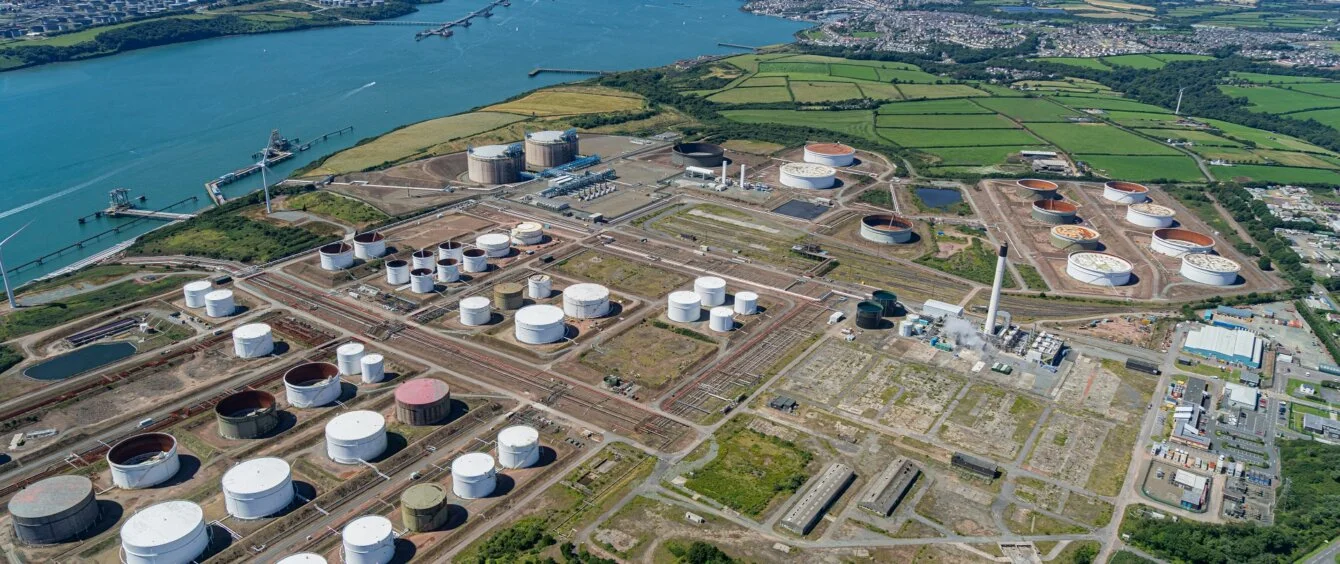Typically a net importer of both natural gas and electricity, the UK has played a different role in the European energy balance last year, reflecting both the havoc wrought by the war in Ukraine and a lack of nuclear power generation in France.
The UK is the second largest producer of natural gas in Europe after Norway, but relies on imports to meet demand. Domestic production peaked in 2000 and, despite demand also falling from peak levels, the drop in domestic output has seen net imports rise.
The UK has multiple uses for gas, the main ones being for power generation, heating and industry. Demand is heavily seasonal, and the UK normally exports gas to the European continent in the summer and imports in winter.
‘Land bridge’ to continental Europe
However, the UK has more capacity to import gas than it needs.
It has three liquified natural gas (LNG) import terminals, Dragon LNG, Grain LNG and South Hook, with combined capacity of 49.2 billion cubic metres a year (Bcm/yr). In addition, the Langeled pipeline from Norway has capacity of 25.2 Bcm/yr, while other connections to Norwegian gas fields via the FLAGs and Vesterled pipeline systems also allow for Norwegian gas imports.
In addition, the UK has bi-directional pipeline connections with both the Netherlands and Belgium, which can handle exports of about 5.5 Bcm/yr and 20.0 Bcm/yr respectively. The UK can thus act as a flexible transit country for imported gas to flow to continental Europe via its pipeline links with these two countries.
British gas for European winter stocks
In the second quarter of this year, UK LNG imports rose 37% and gas exports to the European continent hit a record high, allowing the UK to play a key role in building European gas stocks ahead of winter.
With Europe facing a severe crunch in gas supplies, gas is continuing to flow from the UK to the European continent even in the colder months. In early December, gas flows from the UK to Europe via the UK-Belgium interconnector hit six-year highs.
Electricity exports
A major change in electricity flows is also evident. The UK has electricity interconnectors with Ireland, France, the Netherlands, Belgium and Norway, and is building more.
The UK is typically a net importer of electricity, exporting power to Ireland, but importing from France, the Netherlands and Belgium. The North Sea Link, which was completed in October 2021, has seen electricity flow from Norway to the UK.
In second-quarter 2021, the UK imported 4.5 TWh of electricity from France, 0.35 TWh from the Netherlands and 1.9 TWh from Belgium. In the second quarter of 2022, the situation was completely reversed with the UK exporting 3.4 TWh, 0.8 TWh and 0.41 TWh, respectively, to these countries.
Support for european electricity grids
The switch reflects predominantly a low level of nuclear generation in France, as many of the country’s reactors were offline. With reduced French exports to its neighbours, Belgium and the Netherlands also required more power imports from the UK.
Electricity imports from the UK help European countries conserve gas by using less for power generation. In October, UK exports to France continued, while flows to Belgium and the Netherlands became more balanced.
Interconnector impact
Interconnectors link markets and, in a market system, gas or electricity flows from the market with a lower price to the one with a higher price. Prices between two interconnected markets should converge with sustained differences in pricing indicating limited interconnector capacity.
Interconnectors therefore have both pros and cons. While they provide a means of importing additional power or gas, if needed, they also expose a market to the variations in demand and supply in the connected market.
In the UK, gas prices in December were lower that on the continent as LNG imports into the UK created a temporary surplus larger than the capacity to export to Belgium and the Netherlands.
Reversion to net imports?
The UK’s role as a natural gas transit country could be sustained for some time, as European countries rebalance their energy systems to take account of the loss of Russian gas imports. Ultimately, it should decline as Europe transitions towards a net zero carbon energy system by 2050, a goal the UK shares with its EU neighbours, but natural gas pipeline infrastructure could be repurposed for trade in renewable gases.
Electricity exports are likely to continue until France brings more of its nuclear reactors back on line. Returns to service at present are suffering delays and reduced capacity, but more nuclear capacity should be back online by the summer.
Longer term, however, the UK could see increased electricity exports as both the UK and Ireland increase their renewable energy capacities.
International energy transition benefits
Interconnectors‘ role in optimising generation between markets changes as more variable generation enters the energy mix. They provide the possibility that surplus renewable generation, which would otherwise be curtailed, finds a home in other markets, displacing fossil fuel generation. A large renewable energy source in one country can help underpin the energy transition in another.
Ireland has enough offshore wind potential to meet all-island electricity demand many times over. With progressive development this could reverse the traditional flow of power from the UK to Ireland.
The UK also has huge offshore wind potential and is already a leader in the sector. With an ambitious target set for 50 GW of offshore wind by 2030, the UK will gain much increased clean power generation. International electricity flows should increase to use more efficiently daily and seasonal variations in renewable energy generation.
